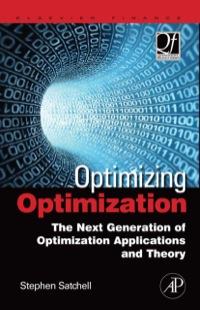Answered step by step
Verified Expert Solution
Question
1 Approved Answer
Question 3. (10 marks) We consider the Black-Scholes model with interest rate r=0 so that the stock price follows dSt=StdWt,t0 where W is a standard

 Question 3. (10 marks) We consider the Black-Scholes model with interest rate r=0 so that the stock price follows dSt=StdWt,t0 where W is a standard Brownian motion and S0 is today's stock price under risk-neutral measure P. Let E be the expectation under P. A binary call option pays $1 if the stock price exceeds the strike K on date T and nothing otherwise. The Black-Scholes price is given by B0=E[1{STK}]=P{STK} where 1A={1,0,ifAistrueotherwise. (a) (3 marks) Show that B0=N(d2), where N() is the cumulative normal distribution function and d2:=Tlog(S0/K)212T. (b) (1 mark) A binary log call option pays $1 if logSTlogK and nothing otherwise. Explain why this contract has the same price as the binary call option. (c) (1 mark) Let C0 denote the Black-Scholes price of a regular European call option with strike K. Its payoff is h(ST)=(STK)+,ST>0. Fixing ST, what is the derivative of h with respect to K for K
Question 3. (10 marks) We consider the Black-Scholes model with interest rate r=0 so that the stock price follows dSt=StdWt,t0 where W is a standard Brownian motion and S0 is today's stock price under risk-neutral measure P. Let E be the expectation under P. A binary call option pays $1 if the stock price exceeds the strike K on date T and nothing otherwise. The Black-Scholes price is given by B0=E[1{STK}]=P{STK} where 1A={1,0,ifAistrueotherwise. (a) (3 marks) Show that B0=N(d2), where N() is the cumulative normal distribution function and d2:=Tlog(S0/K)212T. (b) (1 mark) A binary log call option pays $1 if logSTlogK and nothing otherwise. Explain why this contract has the same price as the binary call option. (c) (1 mark) Let C0 denote the Black-Scholes price of a regular European call option with strike K. Its payoff is h(ST)=(STK)+,ST>0. Fixing ST, what is the derivative of h with respect to K for KStep by Step Solution
There are 3 Steps involved in it
Step: 1

Get Instant Access to Expert-Tailored Solutions
See step-by-step solutions with expert insights and AI powered tools for academic success
Step: 2

Step: 3

Ace Your Homework with AI
Get the answers you need in no time with our AI-driven, step-by-step assistance
Get Started


